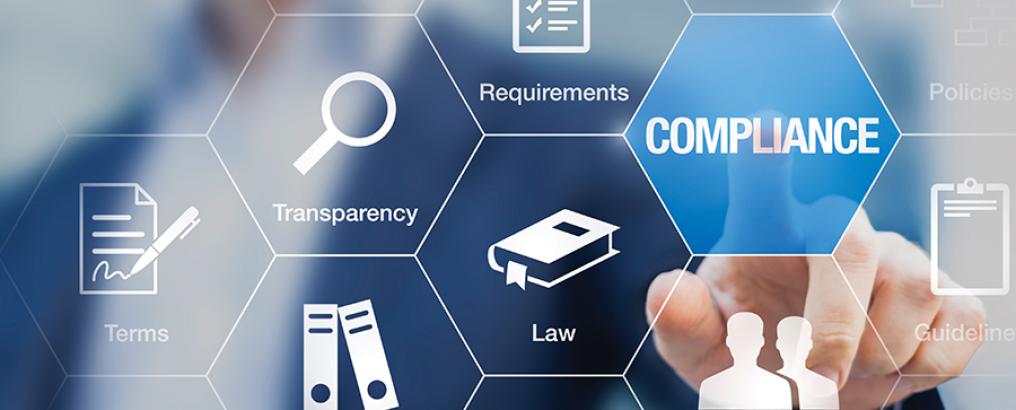Tony Wong, Founder, and Regina Tai,Consultant, Alaya Consulting, discuss the why and the how of aligning your sustainability strategy with the UN Sustainable Development Goals.
Developed by the United Nations (UN) in 2015, the Sustainable Development Goals (SDGs) represent a global consensus on what level of progress is expected towards a global strategic plan. Succeeding the Millennium Development Goals, the SDGs have 17 goals and 169 targets covering a wide range of topics across the economic, social and environmental dimensions of sustainable development. These goals aim to create change and resolve some of the biggest problems facing the world, including poverty, climate change and the need for peace and justice.
Institutional investors are pivotal
Similar to other sustainability reporting initiatives, the success of the SDGs hinges on their reception by institutional investors. At the Responsible Investment Conference in Tokyo, held in April this year, the SDGs were one of the key focuses for institutional investors. While there is still some debate about the investment case for the SDGs, there is no doubt that asset owners with a longer-term investment timeframe, such as pension funds, have been increasingly requesting asset managers to invest in organisations that have aligned their sustainability performance with the SDGs.
Investors are therefore in the driving seat when it comes to demanding changes in how organisations operate, asking them to act responsibly, for example preventing discrimination, promoting diversity, managing their environmental footprints and providing sustainable solutions to relevant issues such as clean energy, water sanitisation and affordable housing.
In addition to the incentive provided by investor concerns, directors and managers also need to take the SDGs into account as part of their fiduciary duty. Their duty to act in the best interests of their organisations requires them to take action on issues such as damage to the environment since such ‘external’ costs will very soon be appearing in their accounts. The SDGs and their underlying targets are therefore not only a way of propelling the development of a more sustainable world, but they also provide organisations with the opportunity to strengthen investor trust, improve environmental, social and governance (ESG) performance and reduce external costs.
Adapting national goals to your organisation
Governments are expected to translate the SDGs into national action plans and initiatives but the SDGs are not only national targets, they rely heavily on the private sector getting involved. The SDGs can act as a framework to help organisations connect their business strategies with global priorities and improve the way they communicate their sustainability strategies, targets and initiatives. However, organisations should bear in mind that aligning their strategic goals with the SDGs is only the beginning of the journey; to really be part of the solution, organisations need to set performance targets to measure their progress towards the goals. Not all of the 17 SDGs, however, will be equally relevant to individual organisations. The extent to which an organisation can contribute, and the risks and opportunities it faces, will depend on its specific situation.
Complementing the HKEX ESG Reporting Guide
The Hong Kong Exchanges and Clearing Ltd (HKEX)
ESG Reporting Guide, with its 12 environmental and 20 social key performance indicators (KPIs), is designed to be a simple tool to help organisations in Hong Kong meet minimum standards in ESG performance and reporting. The Guide is now largely subject to a comply-or-explain enforcement mechanism. As mentioned above, investors are looking for organisations that go beyond the minimum compliance requirements in ESG. Reporting on the SDGs is a way to go beyond the
ESG Reporting Guide and raise your game in sustainability governance.
Although the 17 SDGs have a very broad scope, the specific targets are well-articulated and easy to comprehend. The corresponding KPIs will be mostly based on national standards and there is some flexibility for organisations to set their own KPIs according to their ESG strategy and business nature. Below are some examples of the SDGs that Hong Kong companies may consider implementing and setting targets or KPIs for, covering environmental, social and governance aspects.
Reporting on the SDGs – a five-step process
1. Identify impact areas
The first step for organisations wishing to report on the SDGs is to understand the environmental and social impacts of their operations. That includes the nature and the scale of the impact, as well as the stakeholder groups affected. With the organisation’s vision and mission in mind, management needs to assess whether operations are consistent with, or deviating from, the initial purpose of the business.
Engaging with stakeholders can take place in various forms and is an important way to open the organisation up to dialogue with those impacted by its activities. This step is often neglected by organisations due to a perceived lower level of urgency or in the absence of established channels of communication with stakeholder groups. By looking through a wider lens, however, organisations can broaden their understanding of the business and the people who are affected by it, and aspects that are material to the organisation may be uncovered.
 2. Prioritise focus areas
2. Prioritise focus areas
Before prioritising and picking which SDGs will be the focus areas for your organisation, it is important to consider the integration of sustainability and your value chain. Mapping SDGs along the value chain allows organisations to better assess their roles and the extent to which they contribute to positive and negative environmental and social impacts, as well as the competencies in enhancing and mitigating them. Such impacts may also create potential business opportunities upstream or downstream along the value chain.
Companies should also ask themselves the following three questions regarding the prioritisation of particular SDGs.
- Will focusing on this SDG mitigate significant ESG risks?
- Will it effectively respond to stakeholder concerns?
- Will the company benefit in the long term?
Long-term commitment is crucial because multiple challenges are expected to emerge while changes are being made, such as the need to change behaviour. Given the benefits and opportunities brought by reporting the SDGs as mentioned above, a long-term vision and persistence would be the drivers to overcome the practical challenges of reporting.
 3. Goals and target-setting
3. Goals and target-setting
After deciding the relevant SDGs to report on, formulating and announcing quantifiable targets not only shows commitment to stakeholders, but also sets the basis for action plans. Setting measurable and achievable goals and targets requires data collection on existing environmental and social performance. Targets should be SMART (specific, measurable, attainable, relevant and timely).
Apart from the KPIs required by HKEX, companies may set their own KPIs, taking reference from their peers and various industry-specific target-setting tools, which provide a framework for benchmarking and guidelines on monitoring progress. Additionally, engaging in industrial standards such as certifications, audits and associations are also tools to push for adopting concrete actions and practices.
 4. Planning and implementation
4. Planning and implementation
Putting your vision and strategy into practice is often the biggest challenge in the reporting process. On the one hand, this involves initiating transformation of mindsets and behaviour internally in order to build a smooth mechanism in, for example, data collection and cross-department coordination on implementing sustainable measures.
Building awareness of the SDGs will be key to strengthening the bottom-up motivation among employees, rather than relying on top-down orders from management. Communicating with external stakeholders on the new changes is also important to ensure their support and collaboration. It is necessary for organisations to get their stakeholders involved throughout the process, approaching different groups according to their interests and needs.
5. Reporting on progress
Once your data has been collected and the relevant initiatives have been successfully put in place, you are ready to begin writing your report. During the writing process, it is important to bear in mind that your results must be presented in a way that is linked to the organisation’s business strategy and financial performance.
One major concern of organisations regarding reporting on targets and progress is the negative consequences of failing to achieve the targets. However, a successful report does not only tell how well an organisation has done, but is also transparent on deficiencies and the necessary steps towards improvement. This will provide stakeholders, especially investors, with a long-term perspective on the company’s sustainable development. The SDGs are designed to resolve global sustainability issues; they would lose their purpose if organisations fail to accurately disclose their progress.
Going forward
The SDGs provide organisations with an excellent opportunity to be part of the solution in terms of the environmental, social and governance issues facing the global community. There will be challenges in their adoption, however. The SDGs have been facing issues similar to those that confronted ESG reporting in the early years, such as lacking tools and metrics to measure and manage progress. In addition, they will face the challenge of the need to change mindsets, particularly among middle management. The ‘millennial’ generation is generally eager for change and C-suite executives often understand that the long-term survival of organisations at least partly hinges on how they respond to the SDGs. Middle managers may be resistant to change, however, and may be one of the main barriers to adopting the SDGs. Engaging employees with the right mindset and linking performance appraisals to sustainability issues will therefore be critical to make this work.
Tony Wong, Founder and Regina Tai, Consultant
Alaya Consulting
Alaya Consulting is a Hong Kong-based firm that advises companies on non-financial reporting and sustainability process improvement.
Art source: www.un.org/sustainabledevelopment/news/communications-material/
SIDEBAR: Case study: IKEA
IKEA, the well-known Swedish furniture company, has incorporated the SDGs into its sustainability report for two consecutive years since 2016. This is part of IKEA’s mission to ensure that it has a positive impact on people and the planet. Its target-setting began long before the SDGs were launched, with new targets added annually. The nature of the furniture business prompted IKEA to recognise the ‘use of materials’ as a material topic, with the largest proportion of the targets set in relation to resource independence.
Responding to SDG 12 (Responsible consumption and production), initiatives have been implemented to participate in the circular economy, including collaboration with suppliers and students to identify the causes of high energy and materials consumption and to develop solutions through technological innovation. IKEA has adopted a partnership approach with suppliers, assisting and guiding them to improve their environmental performance, eventually obtaining higher scores in IKEA’s supplier sustainability index.
IKEA has gone beyond the relevant reporting guidelines in its sustainability reporting. More importantly, it has also reported on its progress towards meeting its targets. For example, IKEA aims to source 100% of wood, paper and cardboard products from sustainable sources by 2020. The progress is on track, as 77% of these materials were from sustainable sources in 2017. However, progress has been slow in ensuring that recycled plastic is used in its products; currently only 30% is made from recycled plastics.
 2. Prioritise focus areas
Before prioritising and picking which SDGs will be the focus areas for your organisation, it is important to consider the integration of sustainability and your value chain. Mapping SDGs along the value chain allows organisations to better assess their roles and the extent to which they contribute to positive and negative environmental and social impacts, as well as the competencies in enhancing and mitigating them. Such impacts may also create potential business opportunities upstream or downstream along the value chain.
Companies should also ask themselves the following three questions regarding the prioritisation of particular SDGs.
2. Prioritise focus areas
Before prioritising and picking which SDGs will be the focus areas for your organisation, it is important to consider the integration of sustainability and your value chain. Mapping SDGs along the value chain allows organisations to better assess their roles and the extent to which they contribute to positive and negative environmental and social impacts, as well as the competencies in enhancing and mitigating them. Such impacts may also create potential business opportunities upstream or downstream along the value chain.
Companies should also ask themselves the following three questions regarding the prioritisation of particular SDGs.
 3. Goals and target-setting
After deciding the relevant SDGs to report on, formulating and announcing quantifiable targets not only shows commitment to stakeholders, but also sets the basis for action plans. Setting measurable and achievable goals and targets requires data collection on existing environmental and social performance. Targets should be SMART (specific, measurable, attainable, relevant and timely).
Apart from the KPIs required by HKEX, companies may set their own KPIs, taking reference from their peers and various industry-specific target-setting tools, which provide a framework for benchmarking and guidelines on monitoring progress. Additionally, engaging in industrial standards such as certifications, audits and associations are also tools to push for adopting concrete actions and practices.
3. Goals and target-setting
After deciding the relevant SDGs to report on, formulating and announcing quantifiable targets not only shows commitment to stakeholders, but also sets the basis for action plans. Setting measurable and achievable goals and targets requires data collection on existing environmental and social performance. Targets should be SMART (specific, measurable, attainable, relevant and timely).
Apart from the KPIs required by HKEX, companies may set their own KPIs, taking reference from their peers and various industry-specific target-setting tools, which provide a framework for benchmarking and guidelines on monitoring progress. Additionally, engaging in industrial standards such as certifications, audits and associations are also tools to push for adopting concrete actions and practices.
 4. Planning and implementation
Putting your vision and strategy into practice is often the biggest challenge in the reporting process. On the one hand, this involves initiating transformation of mindsets and behaviour internally in order to build a smooth mechanism in, for example, data collection and cross-department coordination on implementing sustainable measures.
Building awareness of the SDGs will be key to strengthening the bottom-up motivation among employees, rather than relying on top-down orders from management. Communicating with external stakeholders on the new changes is also important to ensure their support and collaboration. It is necessary for organisations to get their stakeholders involved throughout the process, approaching different groups according to their interests and needs.
5. Reporting on progress
Once your data has been collected and the relevant initiatives have been successfully put in place, you are ready to begin writing your report. During the writing process, it is important to bear in mind that your results must be presented in a way that is linked to the organisation’s business strategy and financial performance.
One major concern of organisations regarding reporting on targets and progress is the negative consequences of failing to achieve the targets. However, a successful report does not only tell how well an organisation has done, but is also transparent on deficiencies and the necessary steps towards improvement. This will provide stakeholders, especially investors, with a long-term perspective on the company’s sustainable development. The SDGs are designed to resolve global sustainability issues; they would lose their purpose if organisations fail to accurately disclose their progress.
4. Planning and implementation
Putting your vision and strategy into practice is often the biggest challenge in the reporting process. On the one hand, this involves initiating transformation of mindsets and behaviour internally in order to build a smooth mechanism in, for example, data collection and cross-department coordination on implementing sustainable measures.
Building awareness of the SDGs will be key to strengthening the bottom-up motivation among employees, rather than relying on top-down orders from management. Communicating with external stakeholders on the new changes is also important to ensure their support and collaboration. It is necessary for organisations to get their stakeholders involved throughout the process, approaching different groups according to their interests and needs.
5. Reporting on progress
Once your data has been collected and the relevant initiatives have been successfully put in place, you are ready to begin writing your report. During the writing process, it is important to bear in mind that your results must be presented in a way that is linked to the organisation’s business strategy and financial performance.
One major concern of organisations regarding reporting on targets and progress is the negative consequences of failing to achieve the targets. However, a successful report does not only tell how well an organisation has done, but is also transparent on deficiencies and the necessary steps towards improvement. This will provide stakeholders, especially investors, with a long-term perspective on the company’s sustainable development. The SDGs are designed to resolve global sustainability issues; they would lose their purpose if organisations fail to accurately disclose their progress.



